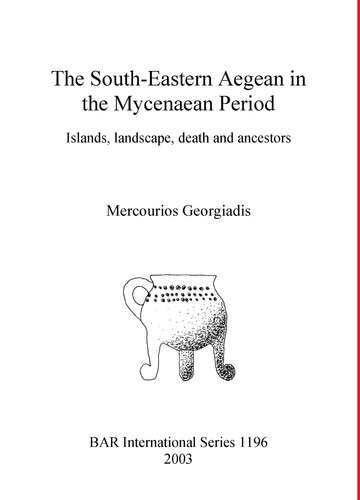

Most ebook files are in PDF format, so you can easily read them using various software such as Foxit Reader or directly on the Google Chrome browser.
Some ebook files are released by publishers in other formats such as .awz, .mobi, .epub, .fb2, etc. You may need to install specific software to read these formats on mobile/PC, such as Calibre.
Please read the tutorial at this link: https://ebookbell.com/faq
We offer FREE conversion to the popular formats you request; however, this may take some time. Therefore, right after payment, please email us, and we will try to provide the service as quickly as possible.
For some exceptional file formats or broken links (if any), please refrain from opening any disputes. Instead, email us first, and we will try to assist within a maximum of 6 hours.
EbookBell Team

4.4
62 reviewsMycenaean culture has been thoroughly studied and is well understood as it relates to the Greek mainland. However, for the Aegean islands, and in terms of this study the South-eastern Aegean, the situation is not so clear. The islands, due to their geographic peculiarities, have a special character and it is essential to appreciate the extent to which their environment affected the local culture. These processes and the way they operate can help us in understanding the character of Mycenaean influence on the islands. Inextricably linked to this line of thinking is the question of migration, colonization and invasion that has been proposed for the islands, entailing population movement from mainland Greece. This ultimately leads to the question of ethnicity and the nature of Mycenaean cultural identity. In order to investigate these ideas, they must be analyzed to find out how they can be applied and perceived in the archaeological record. The South-eastern Aegean, as defined in this study, comprises Samos, Ikaria, Phournoi, the islands of the Dodecanese as well as south-western Anatolia, that is the Carian coast opposite Rhodes, and part of the Ionian coast up to the Küçük Menderes river, Kolophon and Bakla Tepe. Although the main period of study is the Greek Bronze Age, reference is also made to the Neolithic. The book is divided into three parts: Part I, on the environment and movement; Part II, on the landscape; and Part III on burial information. The Appendices provide for the first time all the available data on South-eastern Aegean burials, i.e. the architectural elements of the tombs, their contents and a thorough analysis and presentation of all the finds.